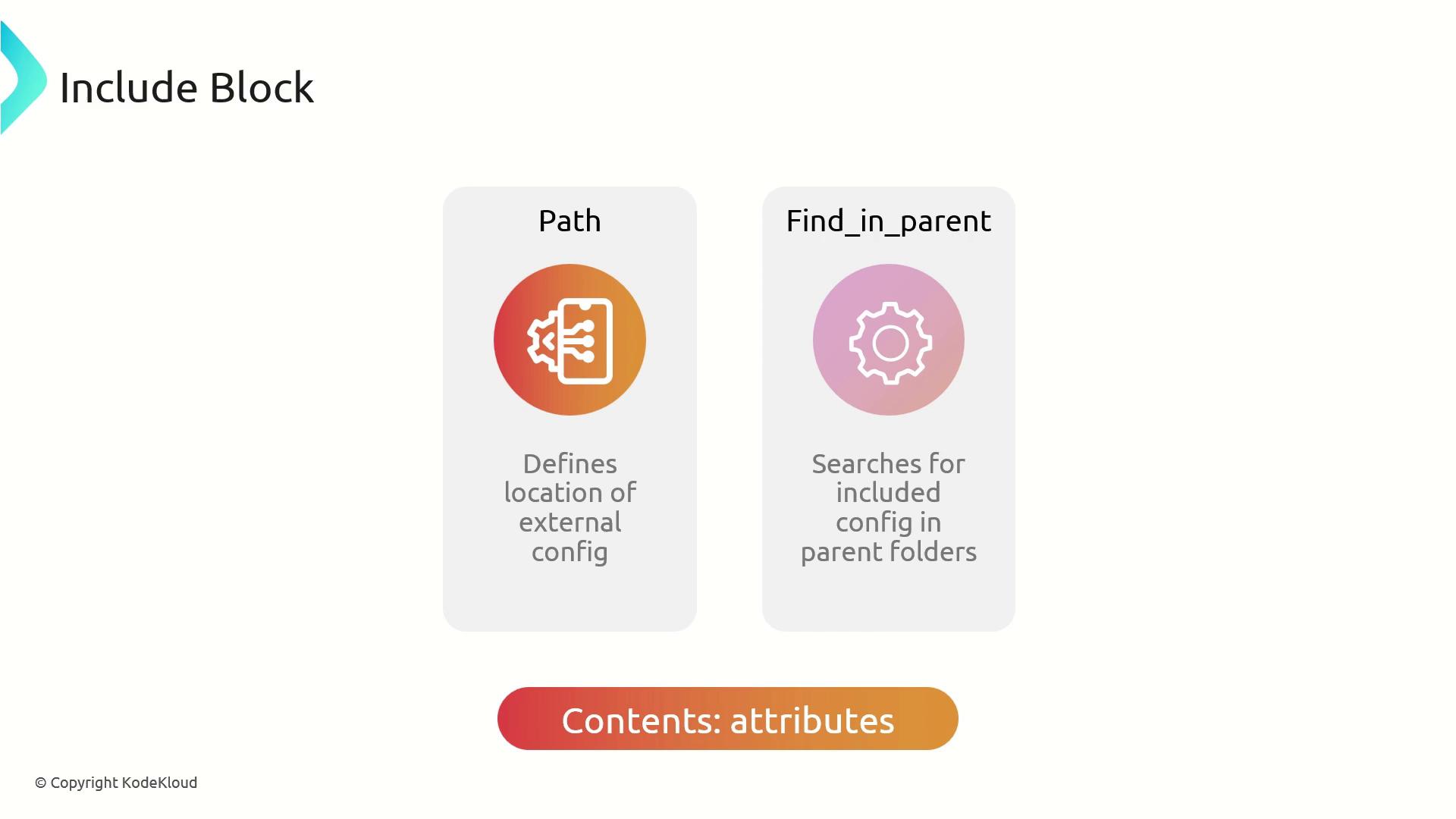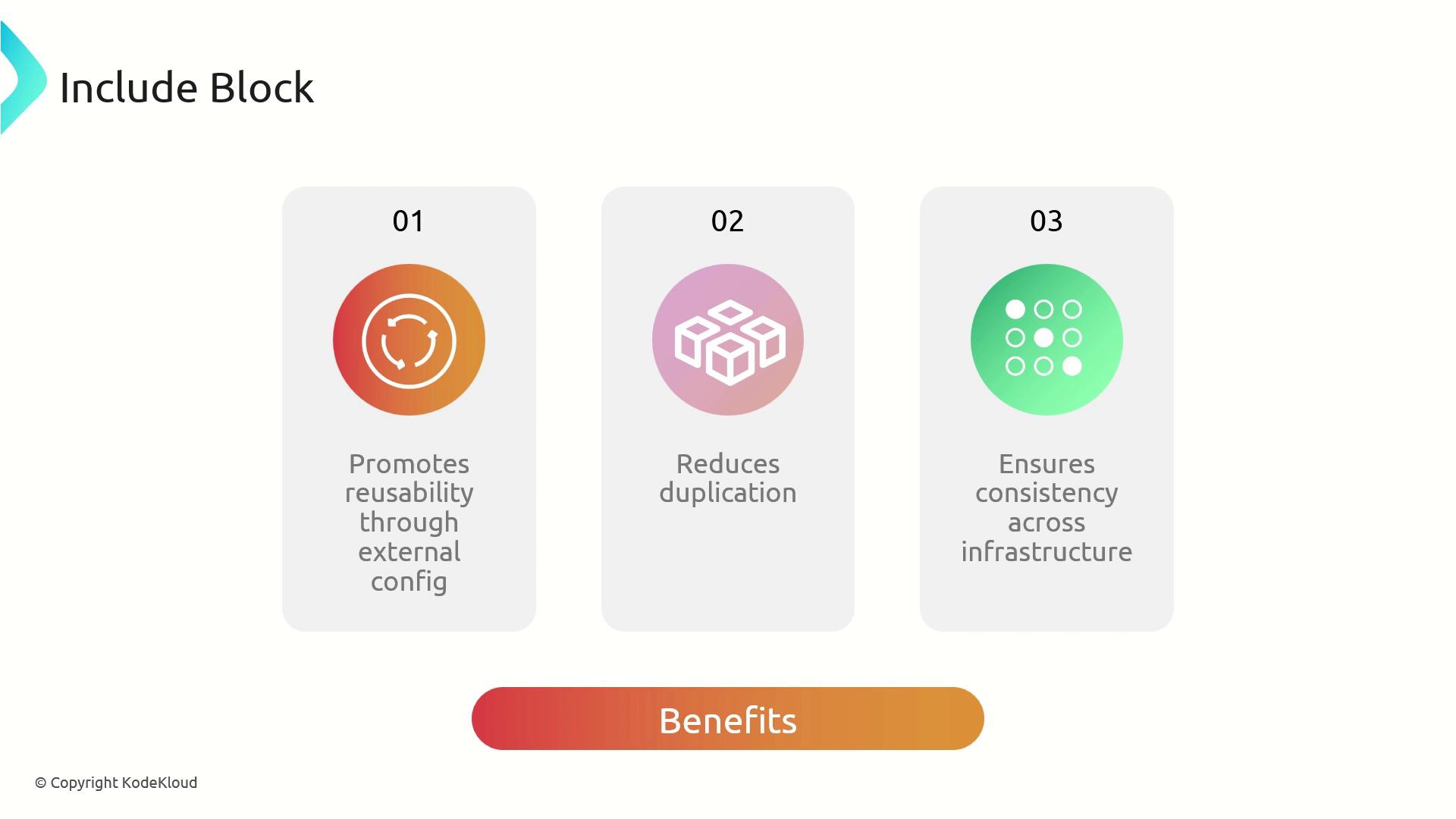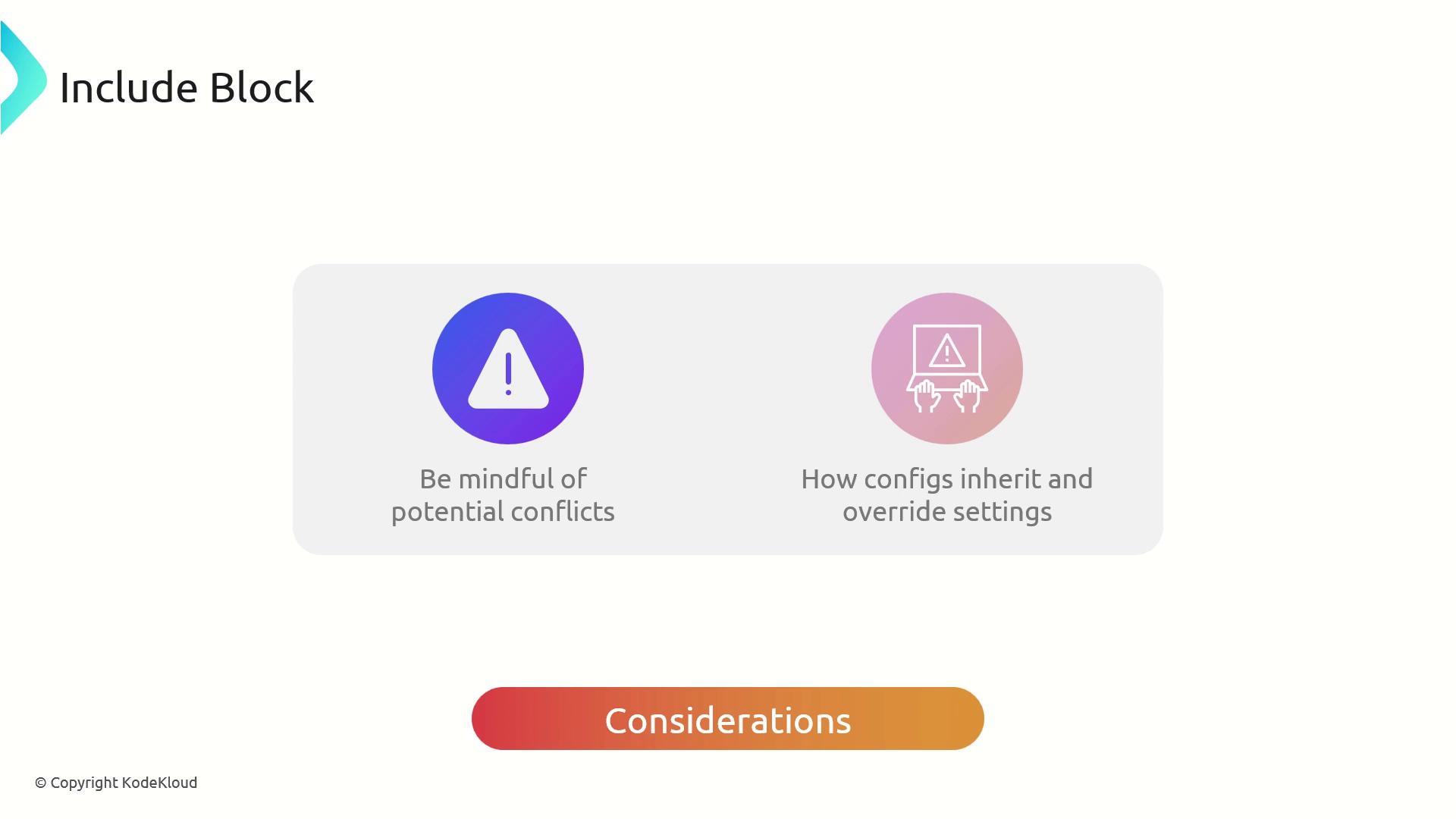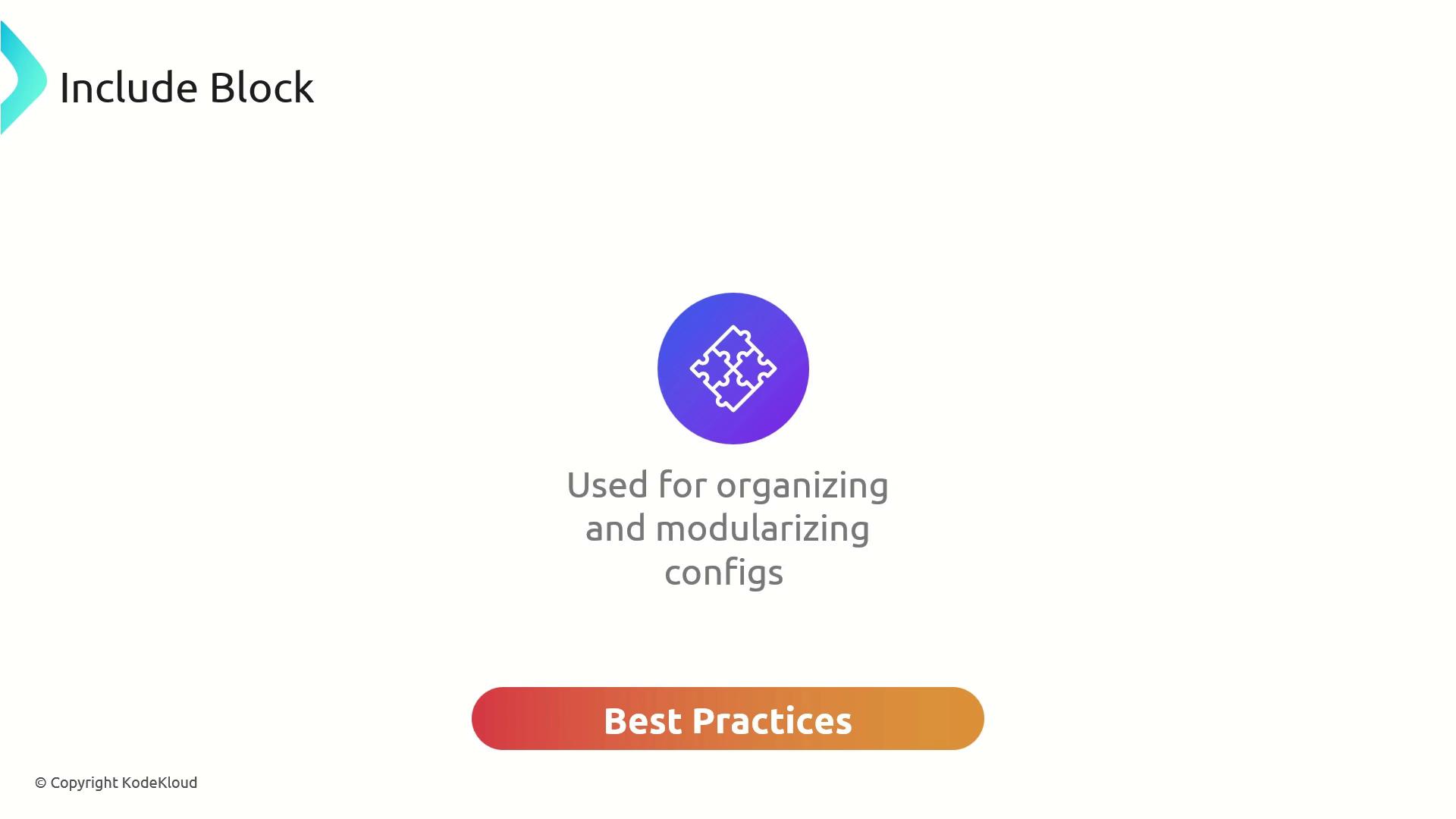Terragrunt for Beginners
Terragrunt Blocks
include Block
The Include Block in Terragrunt enables you to integrate external HCL files or entire directories into your configuration, promoting reusability, reducing duplication, and ensuring consistency across your infrastructure.
Include Block Attributes
| Attribute | Description |
|---|---|
path | Relative or absolute filesystem path to the Terragrunt configuration file or directory. |
find_in_parent_folders() | Searches parent directories for a matching configuration when set to true or used as a function. |

Key Benefits
- Reusability
Integrate shared HCL files to avoid rewriting the same remote-state or provider settings. - Consistency
Enforce uniform patterns (naming conventions, tags, backends) across modules. - Efficiency
Follow the DRY principle by centralizing common logic in one place.

Considerations
- Override Conflicts
Understand how included blocks inherit or override values in child configurations. - Directory Hierarchy
Deep folder structures with multiple includes may become hard to trace without clear naming.
Warning
Avoid overly complex include hierarchies. Always document your folder layout and include points to prevent configuration drift.

Best Practices
- Extract shared logic (remote-state, provider blocks, common locals) into dedicated HCL files.
- Use
expose = trueto make outputs or locals from an included file available to child modules. - Leverage
find_in_parent_folders()to avoid hard-coding relative paths.
Note
Place a common.hcl at your repo root for project-wide settings (e.g., tags, metadata) so that every module can include it.

Example: Centralizing Remote State
In your root terragrunt.hcl, define the S3 backend:
# root terragrunt.hcl
remote_state {
backend = "s3"
config = {
encrypt = true
bucket = "kodekloud-terragrunt-remote-state"
key = "${path_relative_to_include()}/terraform.tfstate"
region = "eu-west-1"
dynamodb_table = "terraform-locks"
}
generate = {
path = "backend.tf"
if_exists = "overwrite_terragrunt"
}
}
In vpc/terragrunt.hcl, include the root remote state:
# vpc/terragrunt.hcl
terraform {
source = "tfr://terraform-aws-modules/vpc/aws//?version=5.8.1"
}
include "root" {
path = find_in_parent_folders()
expose = true
}
When running terragrunt apply in vpc/, Terragrunt will:
- Locate and include the root
remote_stateblock. - Generate
backend.tfwith the S3 backend settings. - Deploy the VPC module using the shared backend configuration.
Example: Sharing Common Configuration
Create a common.hcl at the repository root:
# common.hcl
locals {
project = "KodeKloud"
owner = "DevOps Team"
}
Then in each module (e.g., vpc2/terragrunt.hcl):
# vpc2/terragrunt.hcl
terraform {
source = "tfr://terraform-aws-modules/vpc/aws//?version=5.8.1"
}
include "root" {
path = find_in_parent_folders()
expose = true
}
include "common" {
path = find_in_parent_folders()
expose = true
}
inputs = {
project = local.project
owner = local.owner
}
This approach ensures both remote-state settings and shared locals (like project and owner) are available across modules without repetition.
Links and References
Watch Video
Watch video content